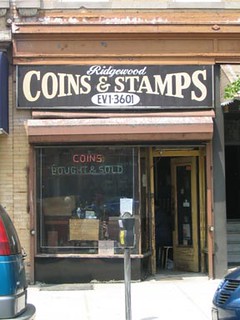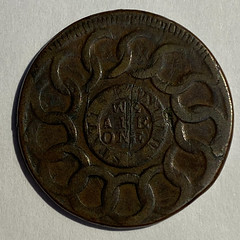
PREV ARTICLE
NEXT ARTICLE
FULL ISSUE
PREV FULL ISSUE
NOTES FROM E-SYLUM READERS: FEBRUARY 7, 2021 No Known Polymer £5 Note Counterfeits "I found the article RAID NETS UK'S LARGEST COUNTERFEIT SEIZURE very interesting. One unfortunate error in it is that the original report used the image of the current polymer £5 note, whereas the criminals had been counterfeiting the last paper £20 note, a very different situation indeed. There are no known examples of any of the new polymer notes being counterfeited and I think that should be made clear." Good point. Thank you. Journalists aren't the best with numismatic details. I perpetuated the error, but that was the only image I had to work with in the article. I must see dozens and dozens of counterfeiting articles each week, and most are uninteresting stories of small-time crooks. The following article from Hong Kong was an example of that, and was included only because of the shared theme. The U.K. report was notable for the size of the haul and the sophistication of the counterfeiters. -Editor
To read the earlier E-Sylum articles, see:
Playing with Coin Whirligigs "E-Sylum readers are so fantastic and filled with information. Thanks for figuring out my Apollo token is a kids toy. I will try it out today with my 2 1/2 year old grandson! Please thank the respondents for me!" DONE! Have fun with it. If you have the piece slabbed, will they drill holes so you can still play? Thanks also to Carol Bastable and other readers who wrote in about coins as pie crimpers. The E-Sylum is like a weekly cocktail party with people across the numismatic spectrum, and the conversation drifts from one interesting topic to the next. Lots to learn along the way! -Editor
To read the earlier E-Sylum articles, see:
Warwickshire Conder Token With Multiple Counterstamps "I read with interest Bob Rhue's bit on his counterstamped Hard Times Token. Definitely a cool piece - but the Brits would say "hold my (warm) beer," as this D&H Warwickshire 81 Conder token has a dozen DIFFERENT counterstamps, all on the reverse side. Stuff like this is definitely fun! "I should note that while the counterstamps are different, the letter punches look quite similar in style, even though some are in different size. I suspect this was a test piece for whoever was making the counterstamp punches that he then sold to others, and perhaps the hole in the center was to hang it from a nail to keep it handy." Interesting piece - definitely a fun item. -Editor
To read the earlier E-Sylum article, see:
Vattemare and the Castorland Jetons
You're welcome. Vattemare's writings are often overlooked by U.S. collectors because they're not in English, but he was one of the giants of early American numismatics. I was pleased to "discover" his 1864 article even though it was only a rediscovery. Generations of numismatists come and go and each one has a lot of relearning to do. Illustrated is Vattemare's entry for the Castorland piece on p119 of his 1861 work. -Editor
To read the earlier E-Sylum article, see:
"In looking for something else, I ran across this great photo of a neighborhood coin store." The store is (or was) in Ridgewood, Queens, New York. Harry ran it past former New Yorker George Cuhaj, who wasn't familiar with it. Can anyone tell us more? Who ran this shop? -Editor
To read the complete article, see:
Franklin Cent = Fugio Cent Bob Rhue writes:
"Fugio cents are one of the perennial favorites of colonial coins because they are billed as the "first coins issued by authority of the United States". "In 1787 Congress authorized a contract with a Mr. James Jarvis for the coinage of 300 tons of copper coin. As an aside, Jarvis had significant problems obtaining sufficient amounts of raw copper. He obtained scrap copper from any available sources, which accounts for the large proportion of known Fugios that are found with one degree or another of inclusions/black impurities embedded in the planchet. "Little known however is the fact that Fugios used to be known as "Franklin Cents". That was because the obverse mottos are credited to Benjamin Franklin. Fugio meaning "time flies"; and "Mind Your Business" meaning tend to your affairs." Thanks. Neat ephemera. I have often seen these referred to as Franklin cents in older numismatic literature. The Newman Portal contains many such references. 'Fugio' is certainly the term preferred today. -Editor Correction: Lincoln Cent Composition Change in 1982 "The switch in composition happened in 1982, not 1972." Len Augsburger and I agree - that's a typo and should be '1982'. He corrected the Newman Portal dictionary entry and we'll fix the E-Sylum archive. Thanks. -Editor
To read the earlier E-Sylum article, see:
1965 Double Headed Quarter "I would like to authenticate my 1965 double headed quarter with no mint mark. It weighs 5.44/5.43 grams." I responded: "Genuine 1965 quarters weigh 5.67 grams. See: A Guide Book of United States Coins by R.S. Yeoman, 2020 edition. Your coin is too light. It's probably a "Magician's coin" used for magic tricks. They're usually made by taking two genuine quarters, splitting them in half and putting the heads and tails sides together to make two fake coins. If you look at the edge, you might find a seam. If you'd like to get an official determination, submit it to one of the major services." Looking at these photos a seam is evident even without seeing the edge. It's very likely a fake. -Editor Wayne Homren, Editor The Numismatic Bibliomania Society is a non-profit organization promoting numismatic literature. See our web site at coinbooks.org. To submit items for publication in The E-Sylum, write to the Editor at this address: whomren@gmail.com To subscribe go to: https://my.binhost.com/lists/listinfo/esylum All Rights Reserved. NBS Home Page Contact the NBS webmaster 
|









